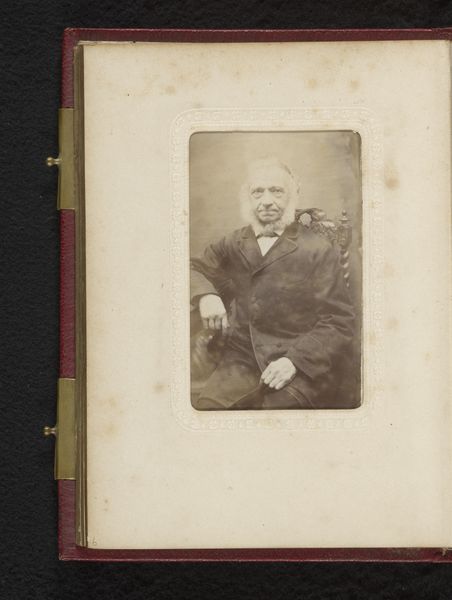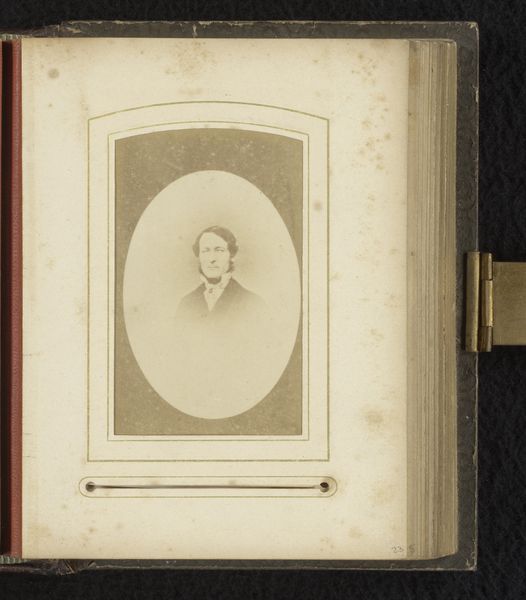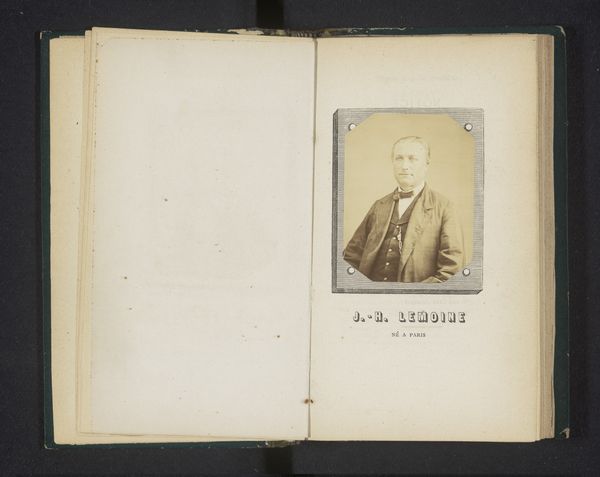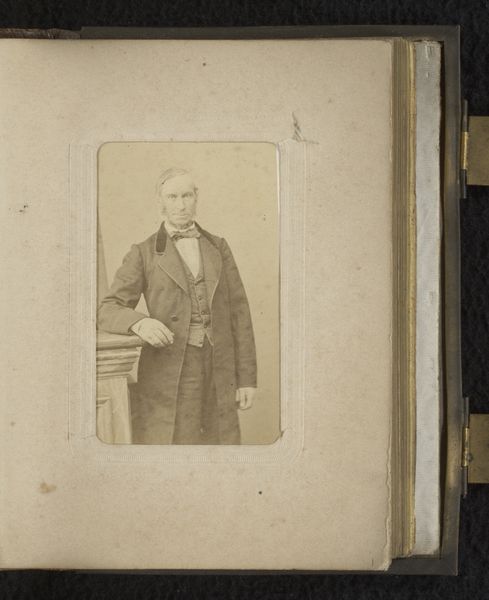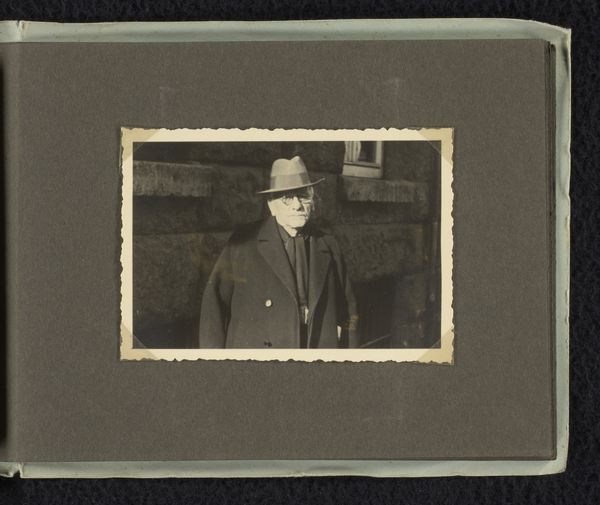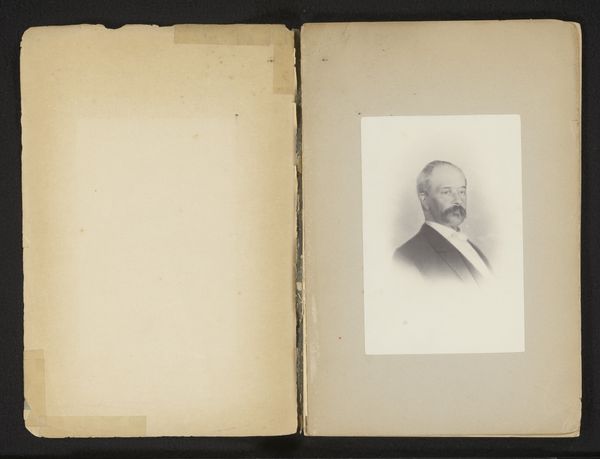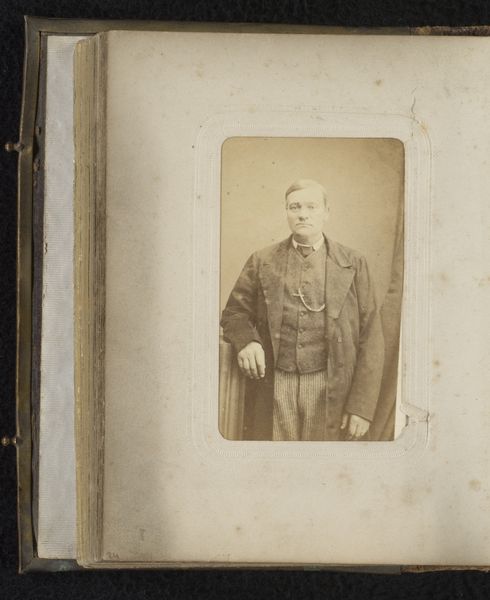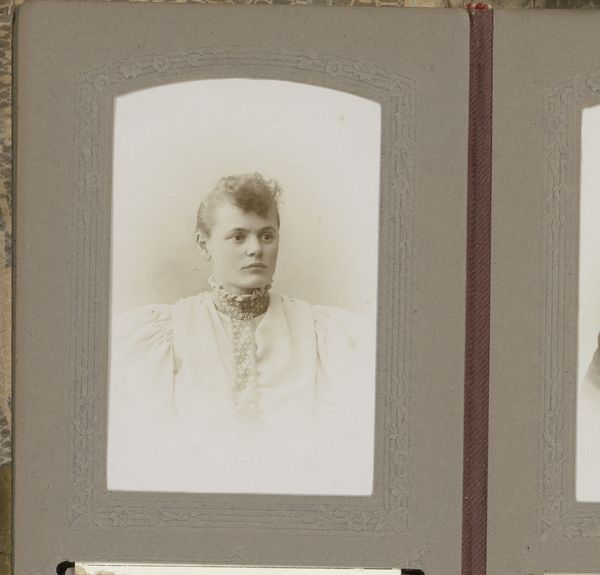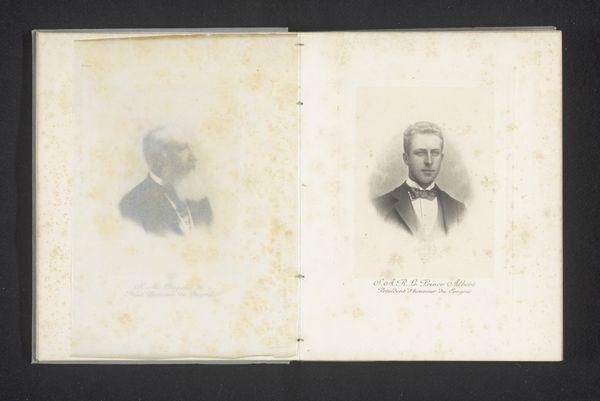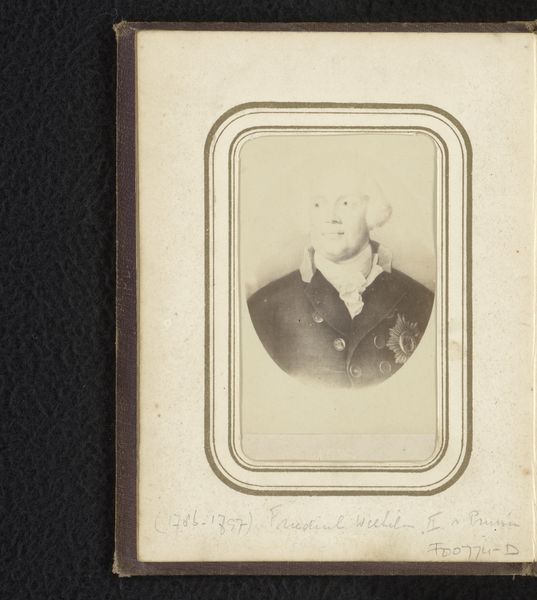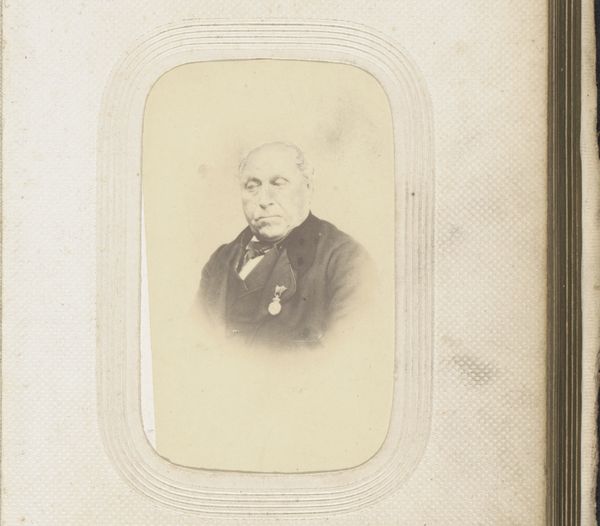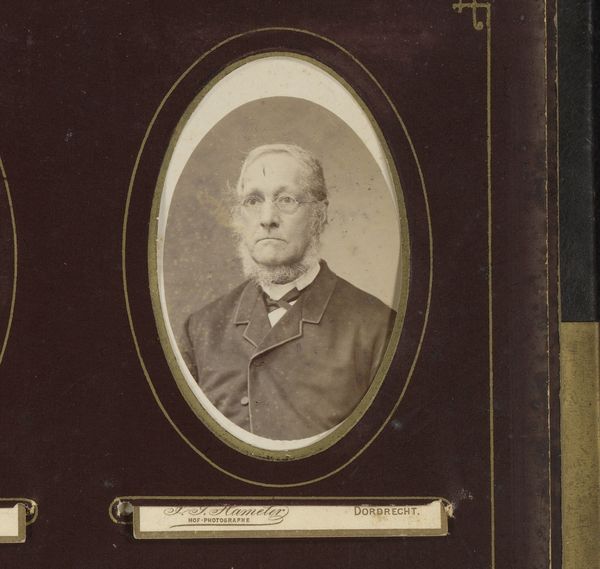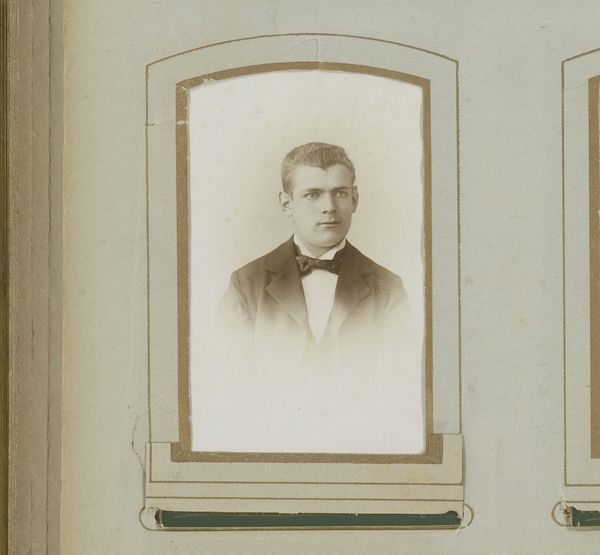
photography, albumen-print
#
portrait
#
photography
#
albumen-print
Dimensions: height 153 mm, width 102 mm
Copyright: Rijks Museum: Open Domain
Curator: Before us is “Portret van Arthur Kennedy,” an albumen print portrait created by Foster & Martin before 1881. Editor: There's something hauntingly serene about this portrait; a stillness captured in sepia tones, and a quiet elegance to the man in the picture, like a study in Victorian gravitas. The photograph itself seems mounted within a book—a physical artifact adding to the experience. Curator: Indeed. Given the timing, we might read this as situated within the Victorian obsession with documenting, preserving, and even memorializing individuals. This photograph allows a deeper consideration of gender presentation, especially for affluent white men. His severe gaze and carefully tailored attire create a narrative about identity and the controlled performance of masculinity in that era. Editor: I’m interested in the albumen print—a specific, hands-on technique. Consider the labour and craft involved in producing this: the coating of the paper with egg whites, the careful exposure, the chemical processing... It speaks to a specific economy of photography and image making that shaped what images got produced. It contrasts so sharply with our current digital reality, where photos are disposable. Curator: It's interesting that you mention that context, the disposability of contemporary images. Early photography, like this albumen print, occupied a more formal and sacred space. As Walter Benjamin theorized in his essay on photography, these images of the nineteenth century often evoked the aura of uniqueness; of singular preciousness because of the complex chemistry. Editor: Looking at this specific mounting, I’m thinking about its journey. A photo album implies domesticity and memorialization—family and personal history, consumption of this piece in everyday life and the book's materiality. Curator: It brings us face-to-face with broader cultural and gendered assumptions about portraiture as capturing "truth," obscuring photography's ability to actively construct particular types of personhood. Kennedy’s gaze, set against a plain backdrop, solidifies a feeling of establishment and authority. What assumptions did Foster & Martin leverage through their artistic methods? Editor: Well, examining Foster & Martin's materials and practice offers an alternate lens onto this, because understanding the tools that shaped their vision necessarily helps reveal power structures at play in portraiture—something about labor in producing these images that’s vital. Curator: Absolutely. It’s the layers of material context alongside the critical, political and aesthetic analyses, making photographs from this time still very much relevant. Editor: Seeing this photograph reminds us of the physical and historical weight embedded in even the simplest-seeming image.
Comments
No comments
Be the first to comment and join the conversation on the ultimate creative platform.
